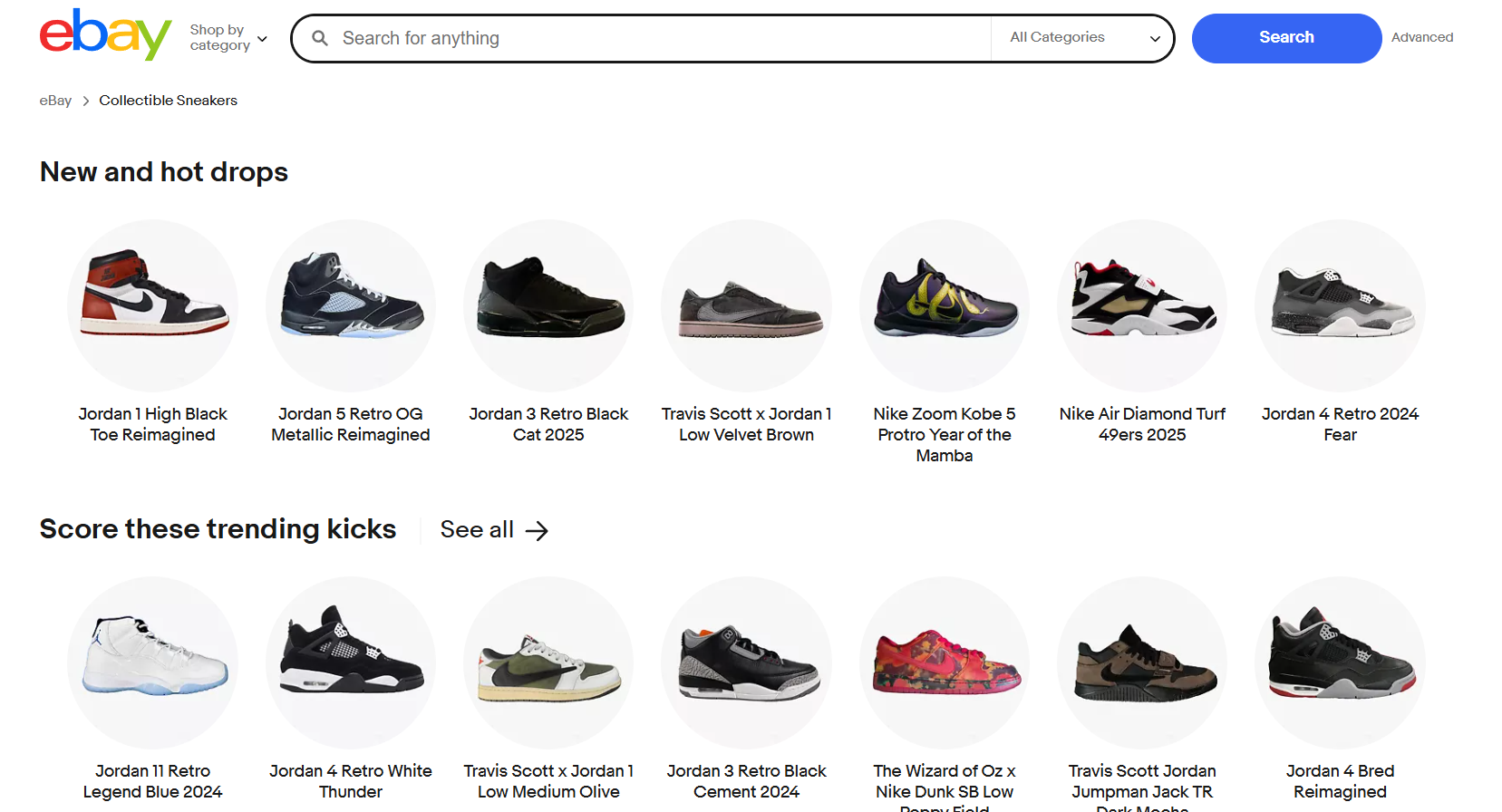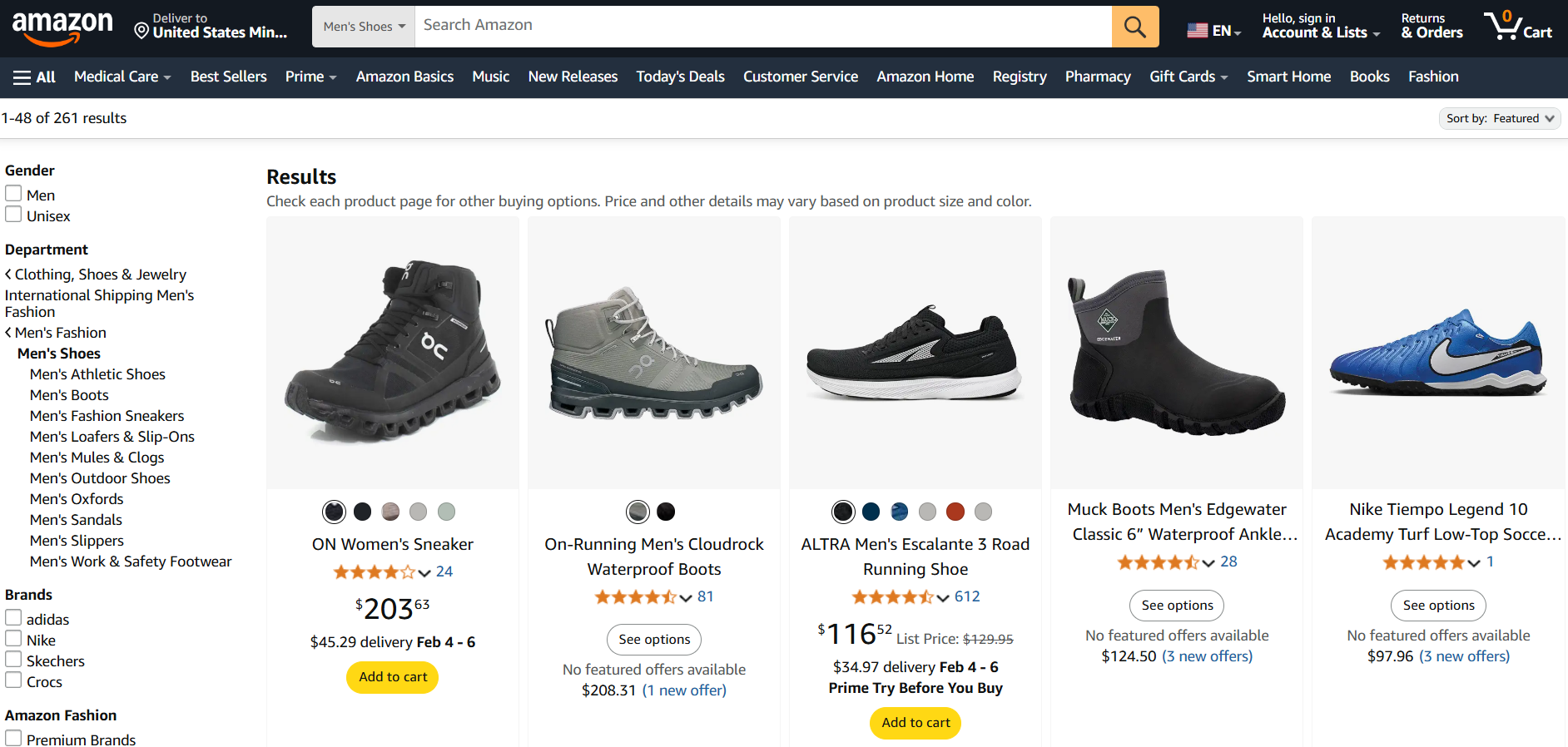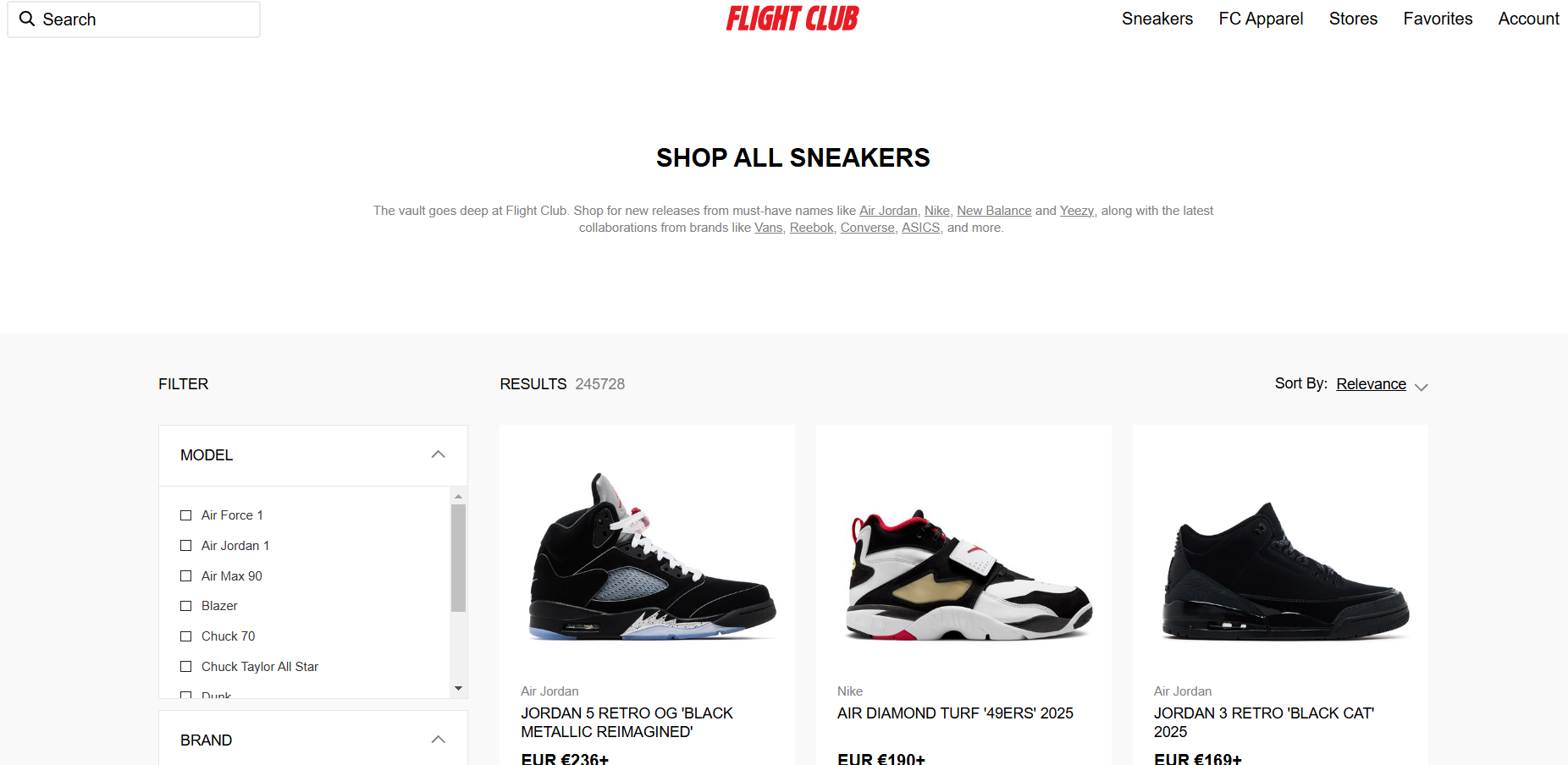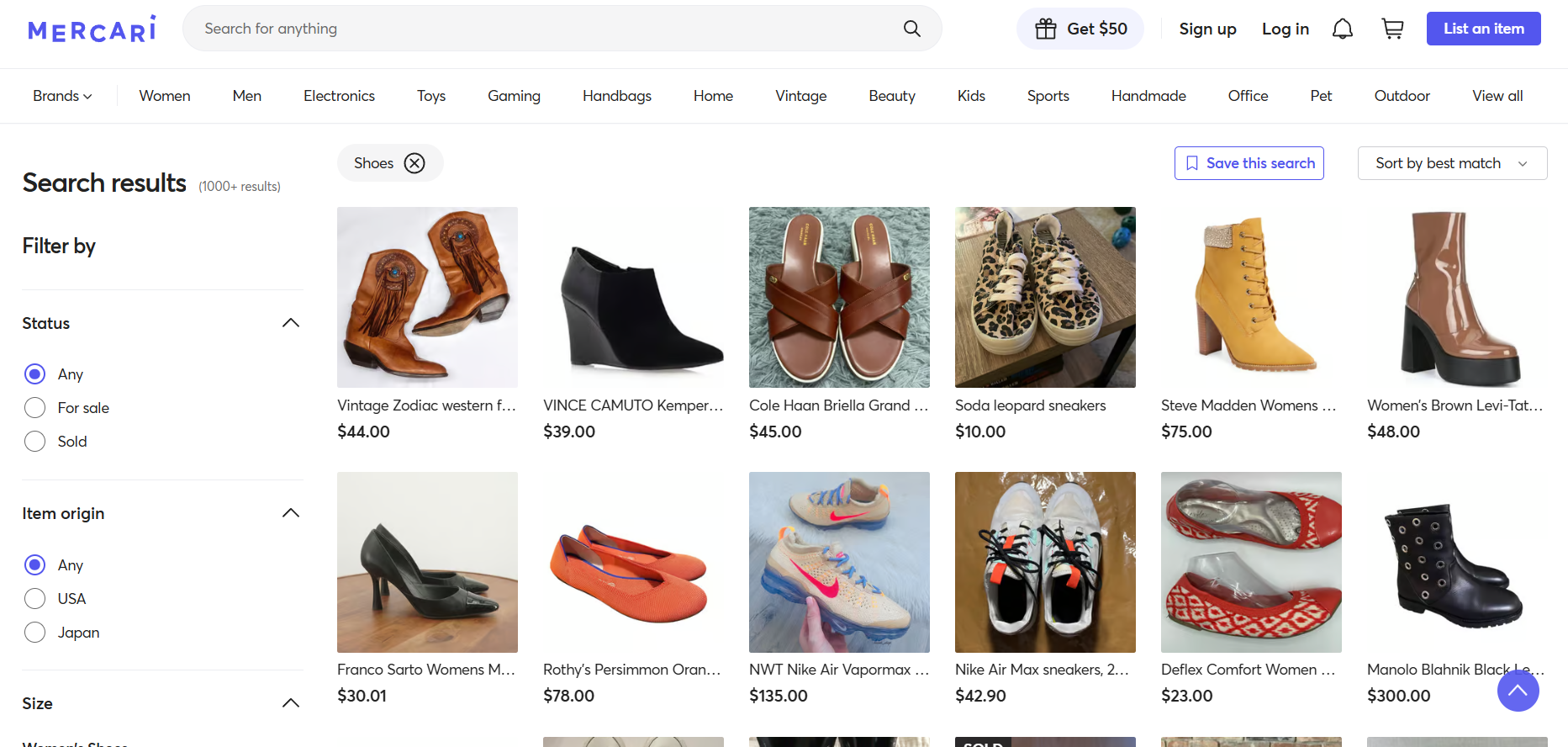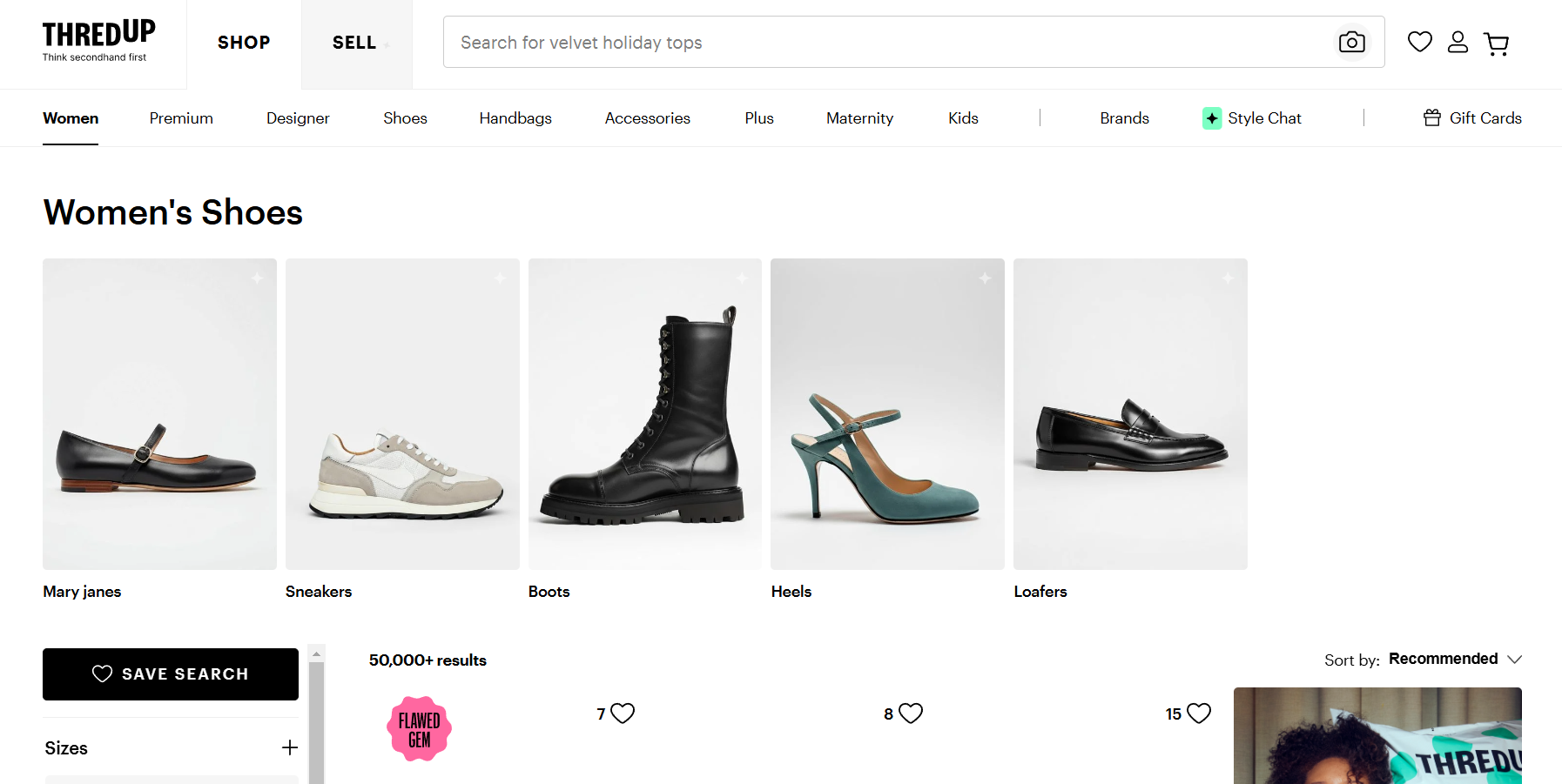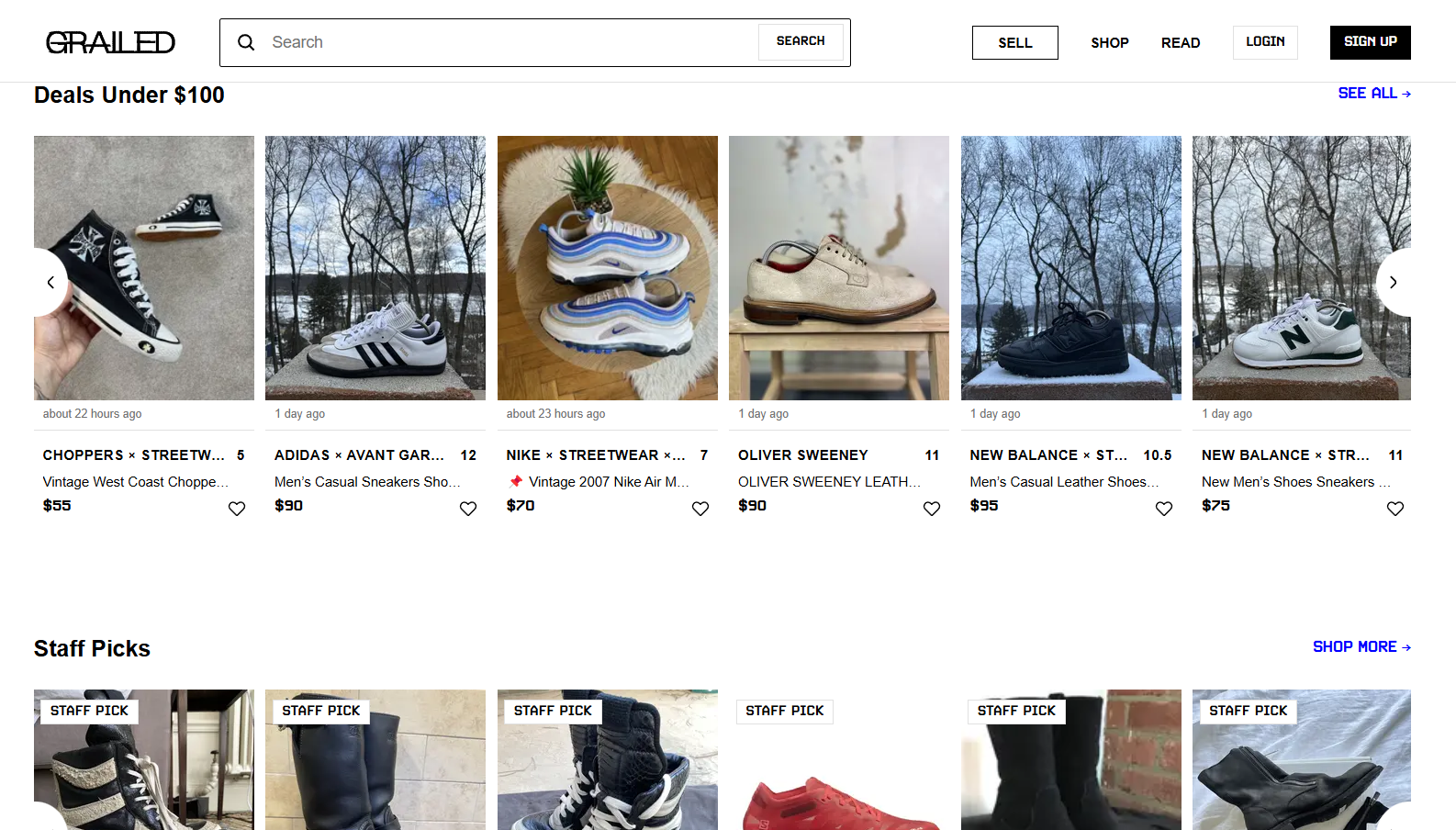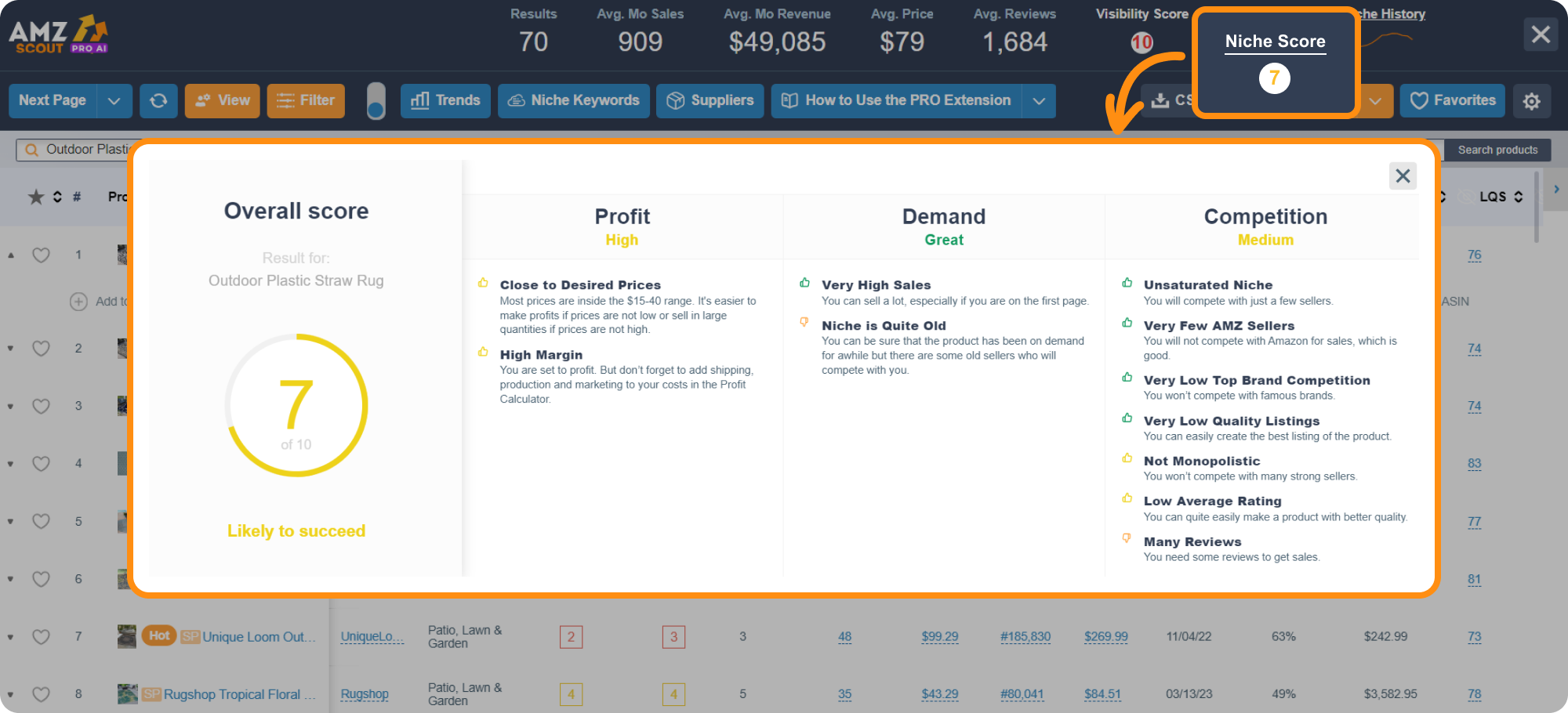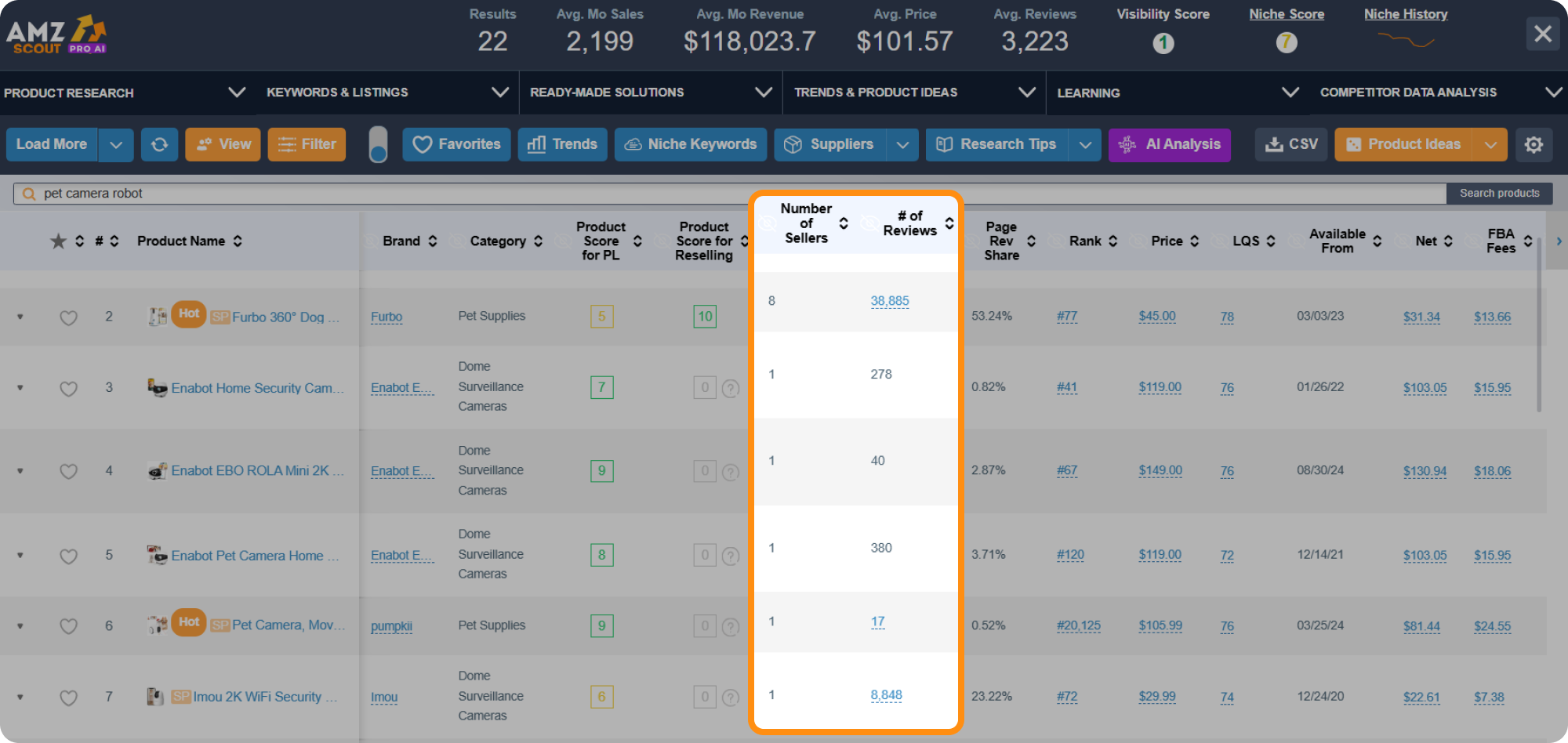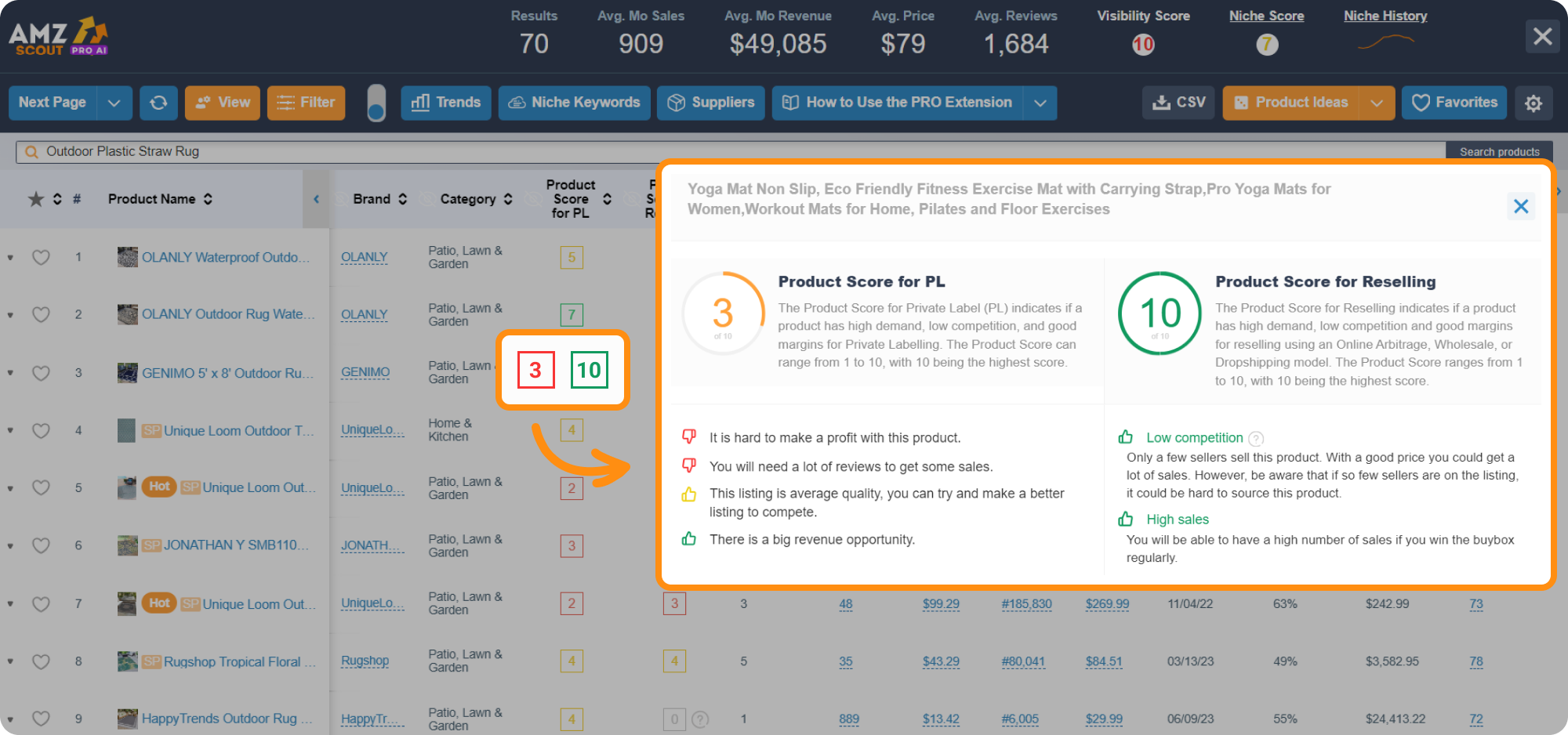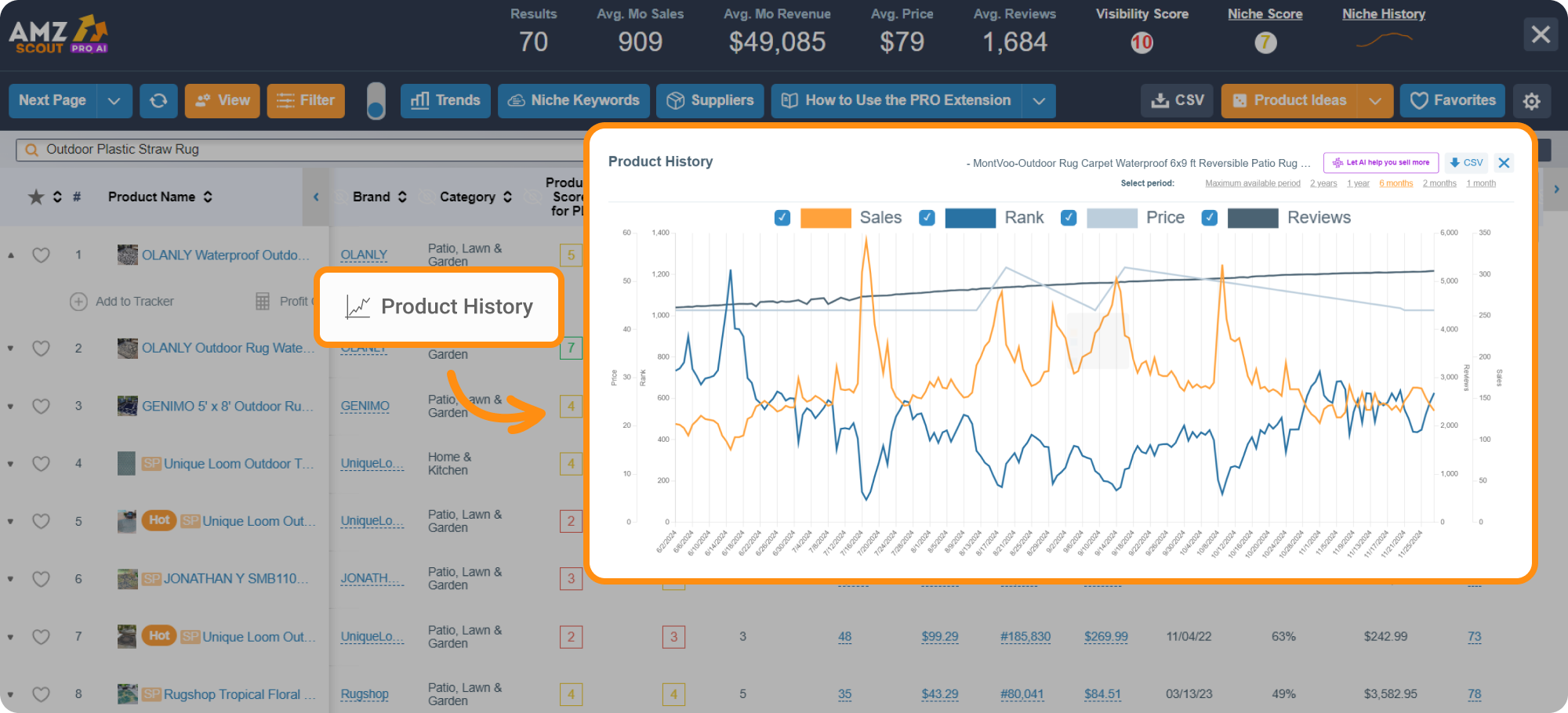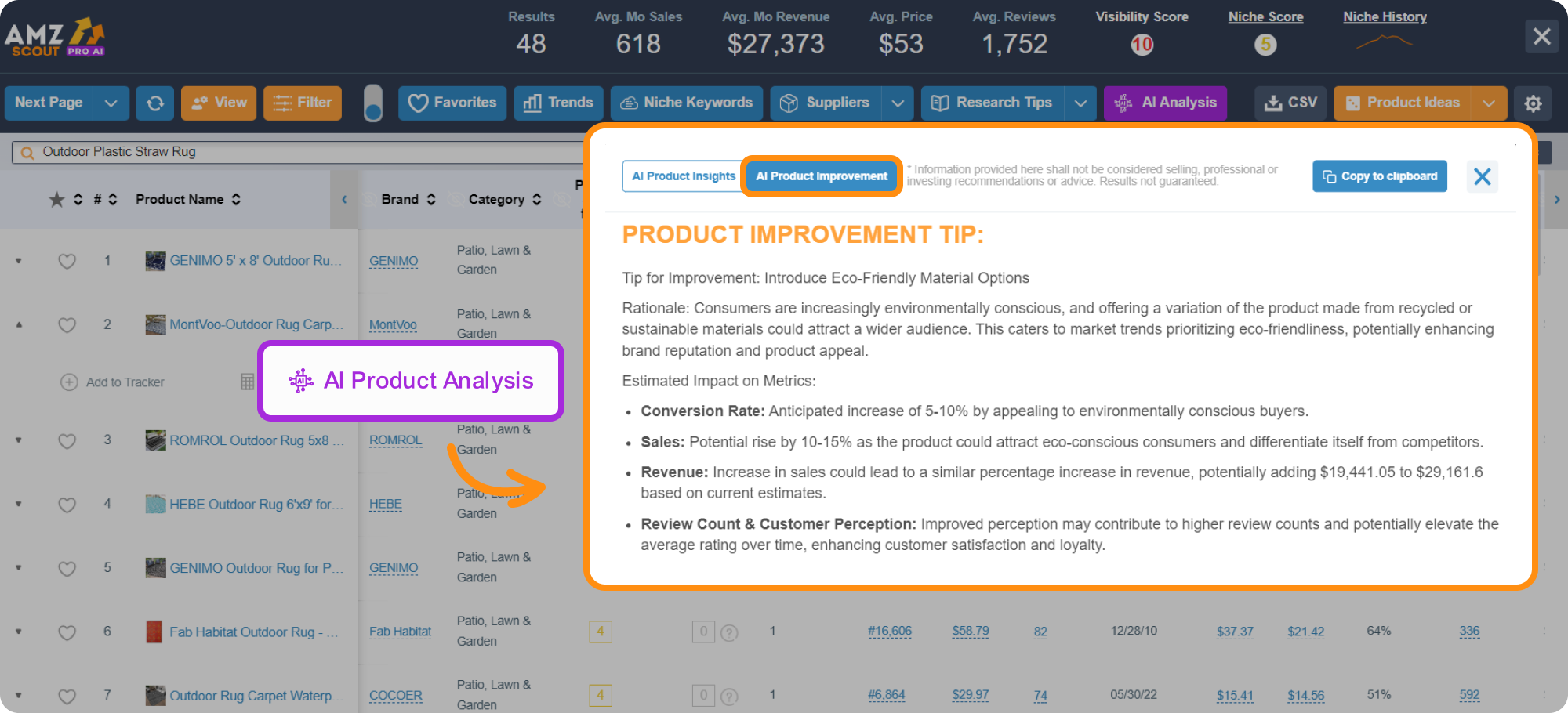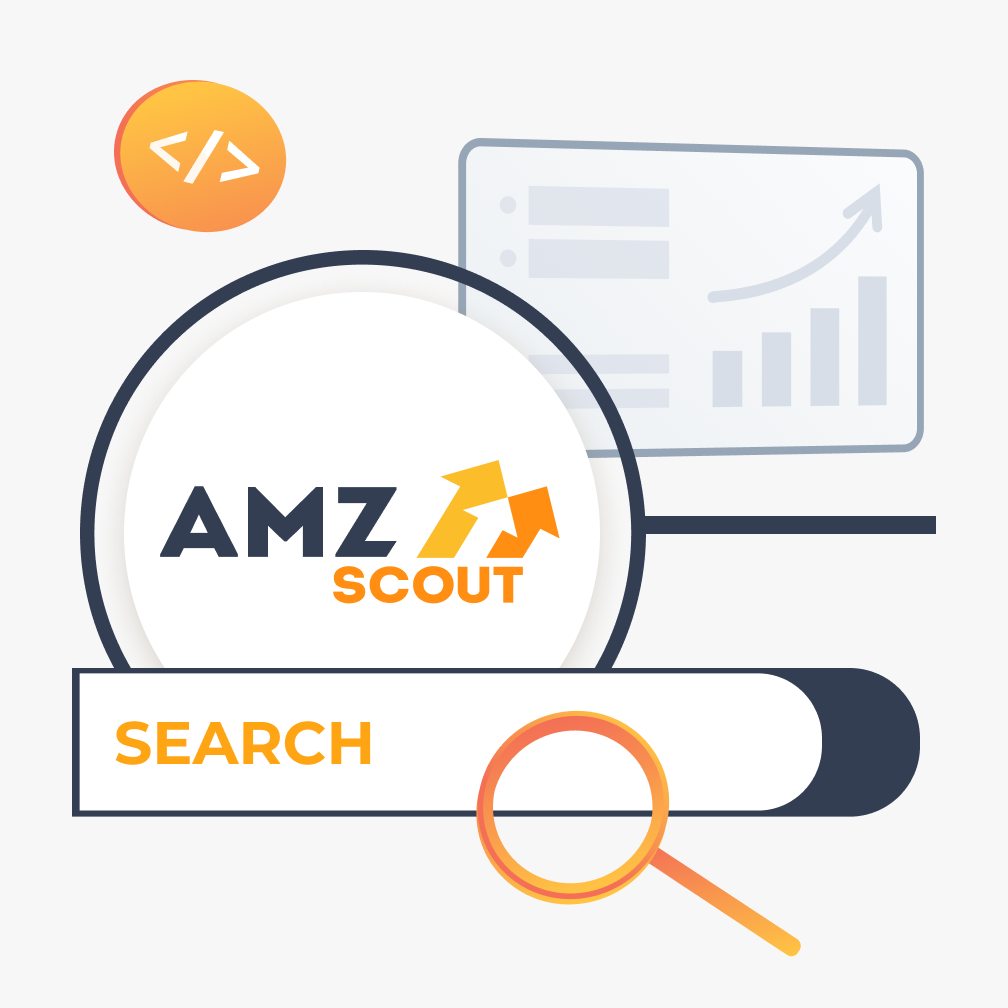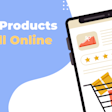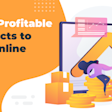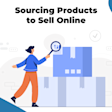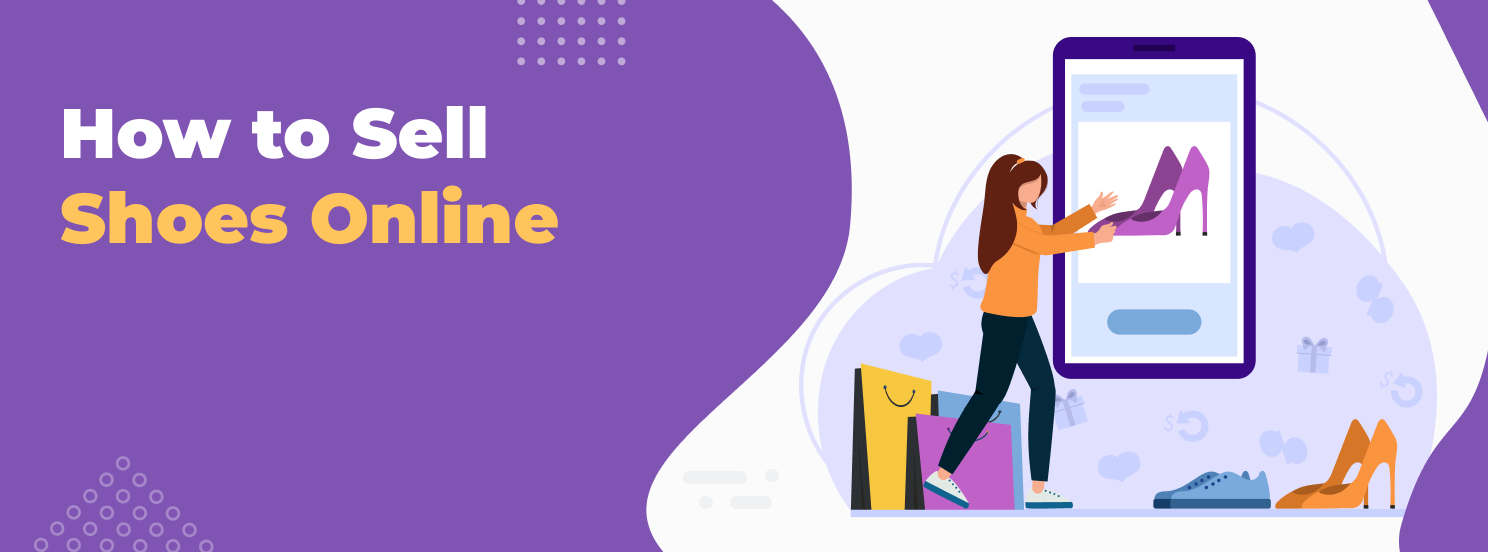
Where and How to Sell Shoes Online: A Comprehensive Guide for Beginners
Selling shoes is both practical and rewarding—everyone needs footwear, and it’s a great way to express personal style. Whether you’re cleaning out your closet or launching a business, shoes remain a universal necessity with consistent demand. With online platforms, selling is easier than ever, allowing you to reach buyers globally from home.
In this article, we’ll explore 15 of the best places to sell shoes online and provide a step-by-step guide for beginners to help you do so efficiently.
Table of contents
The 15 Best Places to Sell Shoes Online
While the answer to the question, "Should I sell shoes online?" might seem obvious to many sellers, the next question often becomes, "Where can I sell shoes for the best profit?" Below is a list of 15 platforms that are suitable for selling shoes of all different types and conditions:
eBay
eBay is a popular platform for online sales, dominating 3.5% of the U.S. online market (according to Statista). This site is ideal for selling collectibles or vintage items, as its auction format attracts buyers seeking unique finds. Unlike eBay’s competitors, such as Amazon or Walmart, eBay is less crowded and more affordable for sellers. Most categories have a 13.25% fee plus $0.40 for orders over $10, with up to 250 free listings/month. However, eBay is better suited for bargain hunters, making it less ideal for selling brand-new shoes at premium prices.
Poshmark
Poshmark is a renowned site for selling fashion items, especially clothes and shoes. With over 80 million users, it offers a large audience for sellers, and helpful tools (like prepaid labels) to simplify logistics. You can list both old and new shoes here, and enjoy features like Posh Parties to help drive traffic to your listings. While creating an account and listing items is free, Poshmark charges a 20% commission on sales, which is relatively high compared to other marketplaces.
Amazon
Amazon is often considered to be the top platform for selling shoes, and caters to over 300 million global customers. From basketball sneakers to luxury brands, you can find a buyer for every pair. Sellers can opt to pay $0.99/sale or $39.99/month, plus there is referral fee of typically 15%.
This platform simplifies selling with programs like Brand Registry for brand owners and FBA for logistics. There are also multiple specialized tools for Amazon sellers to help with product research and other tasks, helping to automate your business and turn it into a source of passive income.
StockX
StockX is primarily focused on selling branded sneakers and running shoes, making it a popular choice for those looking to resell retail footwear. The platform draws heavy traffic: 23.88 million visits in July 2025 alone, according to SEMrush. While the majority of StockX shoppers are based in the U.S. (56.5%), sellers can also reach strong demand in Europe, particularly in the U.K. (4.7%) and Germany (3.8%). Selling here is simple: just search for your product among the existing listings and set your price. The site charges a 3% payment processing fee, along with a transaction fee which can go up to 9%. Additionally, StockX has faced criticism for occasionally selling fake items, which can impact customer trust.
GOAT
GOAT is a versatile platform for selling both new and used shoes, and offers a great selection of items and styles that attract buyers, especially sneaker enthusiasts. This variety helps to secure steady traffic. With $2 billion in shoe sales over the past year, GOAT connects sellers with a vast buyer base that values guaranteed authenticity. However, the platform's fees can be relatively high compared to others, with a commission fee of up to 25% in addition to a seller fee. Keep in mind that if you don’t make any sales, your account could be suspended.
Flight Club
This platform specializes in sneakers and offers the unique advantage of listing items on both GOAT and Flight Club with a single listing. This broad exposure can help attract premium-paying buyers, leading to potentially higher profits. Flight Club benefits from a strong reputation, which further attracts customers. As of 2024, Flight Club generated approximately $299.8 million in e-commerce net sales, illustrating its strong traction in the sneaker consignment space. However, this platform also charges a commission of 9.5% on each sale, along with other strict policies that sellers need to follow.
Stadium Goods
Stadium Goods is dedicated to footwear and focusing on brand-new shoes, so previously-worn items may be rejected. This site is known for its strong reputation, particularly with limited-edition sneakers, and attracts a loyal customer base of buyers who are willing to spend more. When you sell shoes here, Stadium Goods takes care of the listing process and sets the prices. However, the commission is relatively high at 20%, especially since you don't have any control over the pricing. In terms of scale, Stadium Goods generated approximately $46 million in e‑commerce net sales in 2024, highlighting its strong presence and trusted reputation in the sneaker resale market.
Mercari
Mercari is a user-friendly app designed for selling everything from pets to fashion, and offers flexible shipping options to streamline the selling process. As of July 2025, Mercari's website received 100.23 million visits and the platform's core audience is located in Japan (71.55%), followed by the United States (17.86%) and Taiwan (1.66%). You can list shoes for free with no selling fees, although there is a $2 fee for direct deposits to your bank and a $3 fee for instant payments to cash out. Also, keep in mind that Mercari isn’t as popular as other marketplaces, which could result in less traffic.
Facebook Marketplace
Facebook Marketplace offers an easy and quick way to sell shoes online. All you need to do is take pictures of your sneakers, and upload them on the platform. With no listing fees and a 5% transaction fee, this is a cost-effective option. Facebook Marketplace is ideal for those looking for cash transactions, since it allows you to receive money fast through "near me" sales. However, since Meta doesn’t offer seller protection for items over $2,000, it’s wiser to sell expensive shoes elsewhere. As of 2025, Facebook Marketplace boasts over 1.1 billion monthly active users across 228 countries and territories, making it the most popular social commerce platform with a market share of 51.19%
Etsy
Etsy is a top platform for selling handmade goods, making it perfect for aspiring shoe designers. The platform remains a significant player in the e-commerce space, with a gross merchandise sales (GMS) of $10.9 billion in 2024. You can create your own custom storefront to enhance the customer experience and showcase your unique products. Etsy charges a $0.20 listing fee and takes a commission on each sale. This platform also tends to attract a niche audience, which may limit your reach for certain types of products.
ThredUp
ThredUP specializes in secondhand women’s shoes only, not men’s. This site is not an ideal choice if you're looking to resell unused shoes, as the focus is on pre-owned items. The platform assesses items based on brand and quality to determine their prices, with sellers receiving a commission on sales. Additionally, there is a $14.99 processing fee, which could be quite high. Despite all that, as of the first quarter of 2025, ThredUp reported a 6% increase in active buyers, totaling 1.37 million, and a 16% rise in active orders, indicating strong demand and engagement on the platform.
Depop
Depop is a well-known platform, mainly aimed at selling worn items, with over 35 million users. As a subsidiary of Etsy, this site attracts people who want to get shoes and spot sales, which can lower your profit margins. Depop charges a 10% fee on the total transaction amount, including shipping costs. Additionally, you’ll incur a standard transaction fee of about 2.9% + £/€0.30, depending on whether you use PayPal or Depop Payments for payments.
Shopify
Shopify is ideal for sellers seeking more control, since you create your own website and set your own custom policies. As of early 2025, Shopify hosts over 4.6 million live stores worldwide, with merchants across more than 175 countries. A basic store costs $32/month, plus a 2% fee for third-party payments. However, on Reddit, when someone asked, "Can I create my Shopify website for $50?", most respondents said no, as you'll likely need a developer or custom theme, which typically costs over $300. Additionally, responses to "How long does it take to get the website up and running?" seem to suggest a month or more, with extra time needed for promotion.
Grailed
Grailed is a widely used platform for selling secondhand luxury items. In June 2025, the company reported a revenue of $43.1 million from 146,148 transactions, resulting in an average order value (AOV) of approximately $275–$300. There are no listing fees, but Grailed does charge a 9% commission on each sale, plus a processing fee. Sellers are given seven business days to ship products, which is a generous timeframe compared to other platforms. However, some sellers have reported their accounts being frozen without clear reasons, which has raised concerns.
Posting on Instagram is considered to be one of the best ways to promote and sell shoes. As of 2025, Instagram has over 2 billion active users globally, making it a significant platform for businesses aiming to reach a vast audience. In 2024, social commerce sales on Instagram totaled an estimated $37.2 billion, highlighting its growing influence in the e-commerce space.
Listings are free, and you can direct customers to your website or marketplace store, avoiding the 2.9% processing fee for direct purchases. Plus, since Instagram is linked with Facebook, you can list on both platforms simultaneously. However, keeping your audience engaged is essential, and without paid promotions, standing out can be tough.
Each platform comes with its own advantages and limitations, making the choice heavily dependent on your business goals, available resources, and personal preferences. No matter which website you select, setting up an efficient selling process is crucial. Below, you’ll find a guide on how to sell shoes successfully.
How to Sell Shoes: A Complete Guide for Beginners
Now that we’ve explored the best online platforms for footwear, let’s dive into how to start selling efficiently. While the process may vary in each case, here’s a general guide with seven universal steps to help you begin:
#1 Define Your Goals and Target Audience
To develop an effective selling strategy, you need to start by defining your goals. Understanding your objectives will help you stay focused and choose the best approach for your business. Here are some possible goals:
Start a reselling business
Declutter your wardrobe
Sell your own brand
Create custom shoes
It's also equally important to define and understand your target audience. This will enable you to define your selling and marketing strategy. For example, if you want to sell with young people, it’s best to focus on sneakers, while precious leather goods are more for collectors who value craftsmanship and rarity.
Once you’ve decided on the type of shoes you want to sell (if you're not just decluttering your own wardrobe), the next step is to identify a profitable product to sell. Let’s explore how to go about this.
#2 Conduct Product Research
Choosing the right product to sell requires careful market and product analysis. You need to assess factors like demand, profitability, how well the product aligns with your business model and more to ensure that it’s a good fit for your store. A data-driven approach is essential, and analytical tools make this process much more efficient by providing accurate insights and eliminating guesswork.
One of the most effective tools for this is the AMZScout PRO AI Extension, which is known for its intuitive interface and deep analytical insights. Even though it’s designed for Amazon, the market data and trends are relevant across different platforms, as Amazon is a leader in online retail and reflects overall customer behavior and market trends.
Below, we’ll take a look at how you can use AMZScout Pro AI Extension to find a profitable product to sell, tailored to your specific business goals.
Finding the Best Shoes to Sell Online
When considering selling shoes, many people lean towards reselling, which involves buying ready-made products and selling them at a markup. Your profit lies in the difference between the purchase and selling price. To maximize your profitability, follow these essential steps to help you identify the best shoes for resale:
1. Install the AMZScout PRO AI Extension. To start a free trial enter your email address—no credit card information is required.
2. Search for products on Amazon. Enter a keyword, like “sneakers”, into Amazon's search bar. This will bring up a range of products within that category for analysis.
3. Open the extension. Open the extension by clicking the icon in the browser's top-right corner.
4. Assess the niche performance. Examine the Niche Score displayed at the top of the AMZScout window. This score rates a combination of factors like demand, competition, and profitability. A score of 7 or higher suggests a niche with good potential.
5. Narrow Down your search. If the niche shows promise, refine your search using the Filters button to the left. Focus on:
Sales volume: Look for products selling 200–300 or more units each month to ensure consistent demand.
Number of sellers: Target listings with 2–15 sellers to avoid overly saturated markets.
Seller type: Exclude products sold directly by Amazon to reduce competition.
Reviews: Opt for listings with 100+ reviews to confirm demand.
Average rating: Prioritize products with a 4.5-star rating or higher to ensure quality.
6. Ensure alignment with your business model. The product score evaluates product criteria and market demand to determine whether a private brand or reselling model is more suitable for each item. Click the Product Score for Reselling column to sort products by resale potential, displaying the best items for reselling first.
7. Check sales performance. Under your desired product, click Product History to analyze the product’s past performance. Stable or growing sales patterns indicate consistent demand, which is key for profitability.
8. Use AI for deeper insights. Click AI Product Analysis under the product to access a summary of the product’s strengths and weaknesses. This tool highlights opportunities and potential challenges, helping you decide whether the product fits your goals.
9. Calculate profitability. If the product shows promise, click the Profit Calculator under the product to estimate your margins. Input costs like purchasing, shipping, and fees. A profit margin of 20% or more is generally a strong indicator of a viable product.
Optional: Compare and finalize your selection. Save potential products using the "Favorites" feature in the upper-left area of the window. Then, use the "Product Comparison" tool to analyze them side by side. This feature highlights strengths and weaknesses, helping you identify the product with the highest potential for success.
This approach allows you to make data-driven decisions, reduce risks, and boost your chances of success. By identifying high-potential products, you can invest wisely and position your business for growth.
#3 Choose an Appropriate Platform
Once you’ve decided which shoes to sell, the next step is choosing the right platform to list your products. Here are some key criteria to consider:
Target audience: The platform should match your audience's preferences, like social features or mobile apps favored by younger buyers.
Product condition: It’s important to choose a platform that aligns with the condition of the shoes you're selling. There’s no point in listing brand-new shoes on a site primarily for secondhand items.
Style focus: Some platforms specialize in certain types of footwear, like sneakers, so choose one that aligns with your product style.
Costs: Pay attention to listing fees, commission charges, and any other additional fees for services like payment processing or shipping.
Technical side: Platforms like Shopify may require more technical skills to set up and manage, while others, like eBay or Mercari, offer a more straightforward selling process.
Seller conditions: Review policies regarding returns, cancellations, and fines to ensure that they align with your business practices.
Once you've selected the best platform, the next step is to register your account and get your listings live. However, before you can list your shoes, you need to source the products you want to sell.
#4 Find a Reliable Supplier
If you're not decluttering your own wardrobe or handmaking shoes, sourcing your products becomes an important step in the process. Here are several places where you can buy shoes to sell:
Brand owners/distributors: Bulk orders typically lead to lower product prices, ensuring better margins.
Online marketplaces: Platforms such as Alibaba provide access to a variety of manufacturers and wholesalers.
Dropshipping suppliers: This option involves low initial costs but requires careful attention to platform rules, especially on platforms like Amazon.
Auctions: Rare or limited-edition shoes can often be sourced from online auctions, which can be a great way to find unique items.
Online & offline physical stores and outlets: Local stores and outlet sales often offer valuable deals on shoes that can be sold for a profit.
Thorough research on suppliers is crucial—check customer reviews, verify certifications, and perform a quick online search to avoid scams. Additionally, placing test orders and reviewing return policies ensures a reliable and secure supply chain for your business.
Each sourcing option has its pros and cons, so be sure to align the method with your budget and business goals. By selecting the right sourcing strategy, the foundation for a successful shoe-selling venture is set.
#5 Manage Your Inventory and Logistics
Proper inventory management helps prevent order cancellations and out-of-stock situations, which can harm your reputation. Some platforms offer integrated tools to handle inventory, while others require you to manage it independently. Automation apps can simplify and improve your inventory tracking, making the process more accurate.
When it comes to shipping, choosing a reliable and fast courier is crucial to maintaining smooth operations. If the platform doesn’t provide prepaid labels or shipping solutions like Amazon FBA, you’ll need to arrange these logistics yourself. To minimize delays, aim to dispatch orders as quickly as possible. During peak periods, consider hiring someone to help with your packing and shipping.
By efficiently managing inventory and logistics, you'll improve your order fulfillment process and boost customer satisfaction.
#6 Create High-Quality Listings for Your Products
While some platforms may not require extensive details, creating a well-rounded listing is key to driving traffic and attracting your target audience. Here are a few tips for an efficient listing:
Description: Be clear about the size, material, and condition of the shoes to minimize returns. Make it customer-friendly and compelling, highlighting what makes your product stand out.
Visuals: If possible, include a video, as this is a highly effective way to convert viewers to buyers. Photos should be high-resolution and clearly show any defects or unique features.
Catchy title: Craft a catchy and informative title that grabs attention and encourages potential customers to click and learn more about your product.
It’s also important to saturate your product listing with relevant keywords to help customers find your product. Consider using AMZScout’s Keyword Search free trial to discover the best keywords for your niche.
By incorporating the right keywords, you can significantly increase your product’s visibility and improve its chances of being found by potential buyers.
#7 Work on Your Marketing and Promotion
E-commerce is highly competitive, and to stand out, you need effective marketing and promotion strategies. While your specific approach will vary depending on the platform you're using, here are some key tactics to consider:
Robust social media presence: Engage with your audience on platforms like Instagram, Facebook, and TikTok to showcase your products.
Paid ads: Use ads like Google or Facebook ads to reach a wider audience and drive traffic to your listings. If you’re selling on Amazon, consider checking out this guide to optimize your PPC.
Promotions: Offer time-limited discounts or bundle deals to create a sense of urgency and encourage quick purchases.
Influencer collaborations: Partner with influencers to promote your products to their followers, or use platform-specific influencer programs (like Amazon's) to advertise directly.
Word of mouth: Happy customers can be your best promoters, as they share positive reviews and experiences with others.
By using these diverse strategies, you can increase your visibility and accelerate your sales.
While decluttering your wardrobe can be a fun and extra source of income, selling professionally demands consistent effort. Over time, you'll learn what works and what doesn’t, allowing you to fine-tune your strategy for better results.
Conclusion
Whatever shoe style, item condition, or platform you choose, your focus should be on ensuring profitability. Consider using the AMZScout toolkit to find top products and boost the visibility of your listings. This will enable you to increase your earnings and sustain long-term success in the online shoe market.
FAQs
Is it worth selling shoes online?
Selling shoes online can be a profitable venture, offering a global customer base and lower startup costs compared to traditional businesses. However, choosing the right products is key to ensuring profitability. The AMZScout toolkit can help streamline your shoe selection process, assess potential profit margins, and increase your chances of success.
Can you sell used shoes to a pawn shop?
Yes, pawn shops and second-hand stores are good places to sell used shoes. You can also try consignment shops or thrift stores, especially for designer pieces. Make sure your shoes are in good condition. It can also be helpful to provide proof of authenticity (like certificates or receipts) when selling high-end items to prove they’re not replicas.
How can I make money selling shoes?
To sell shoes for money, you can either source them elsewhere or sell your own items. Once you have your inventory, think about whether you want to sell shoes in person or online. If you opt for the online route, remember to take clear, appealing photos and list your shoes on high traffic platforms like eBay or Amazon. Consider using the AMZScout toolkit to help you optimize your product listing and drive traffic effectively.
